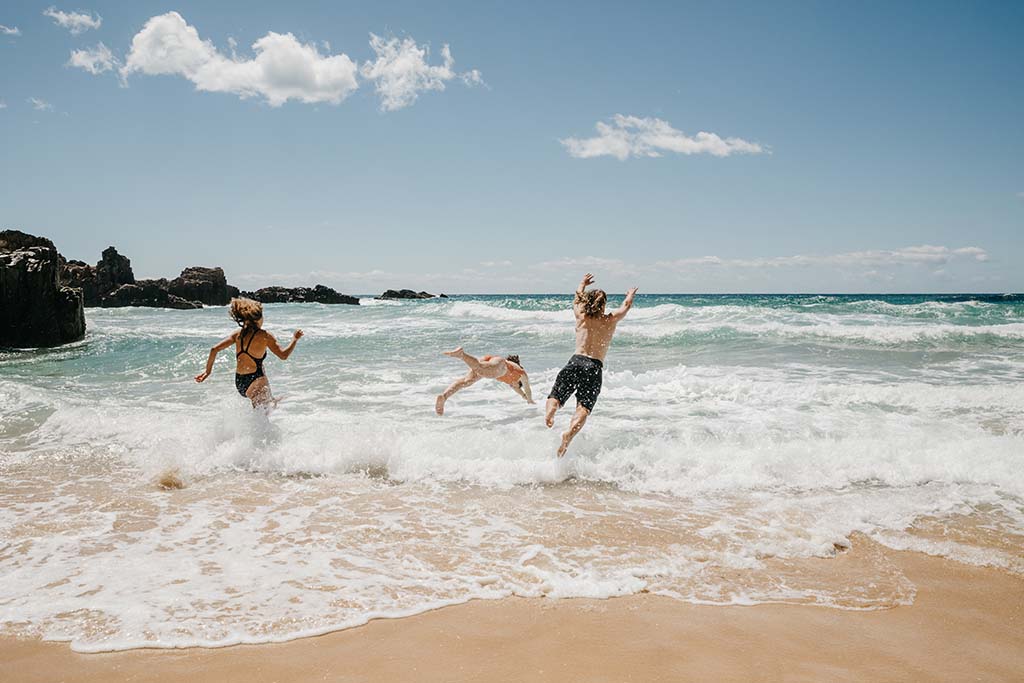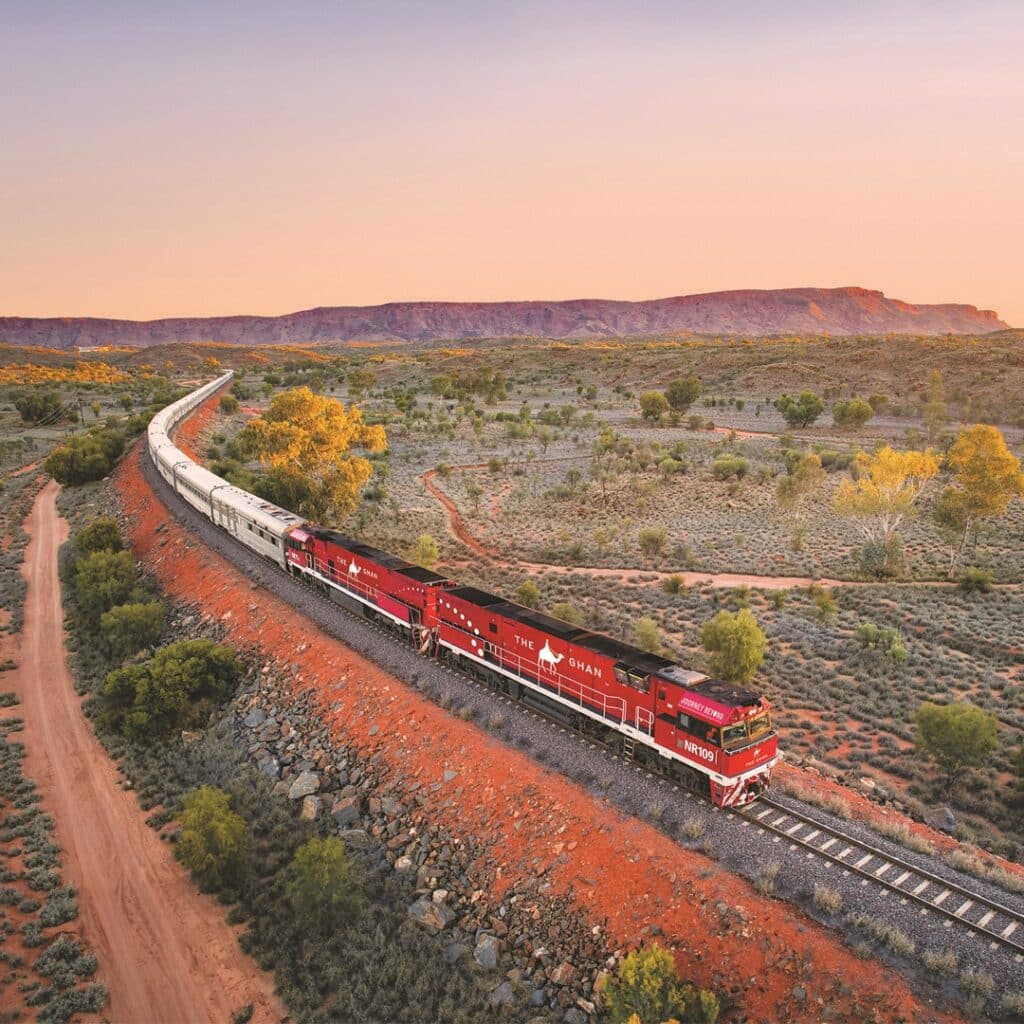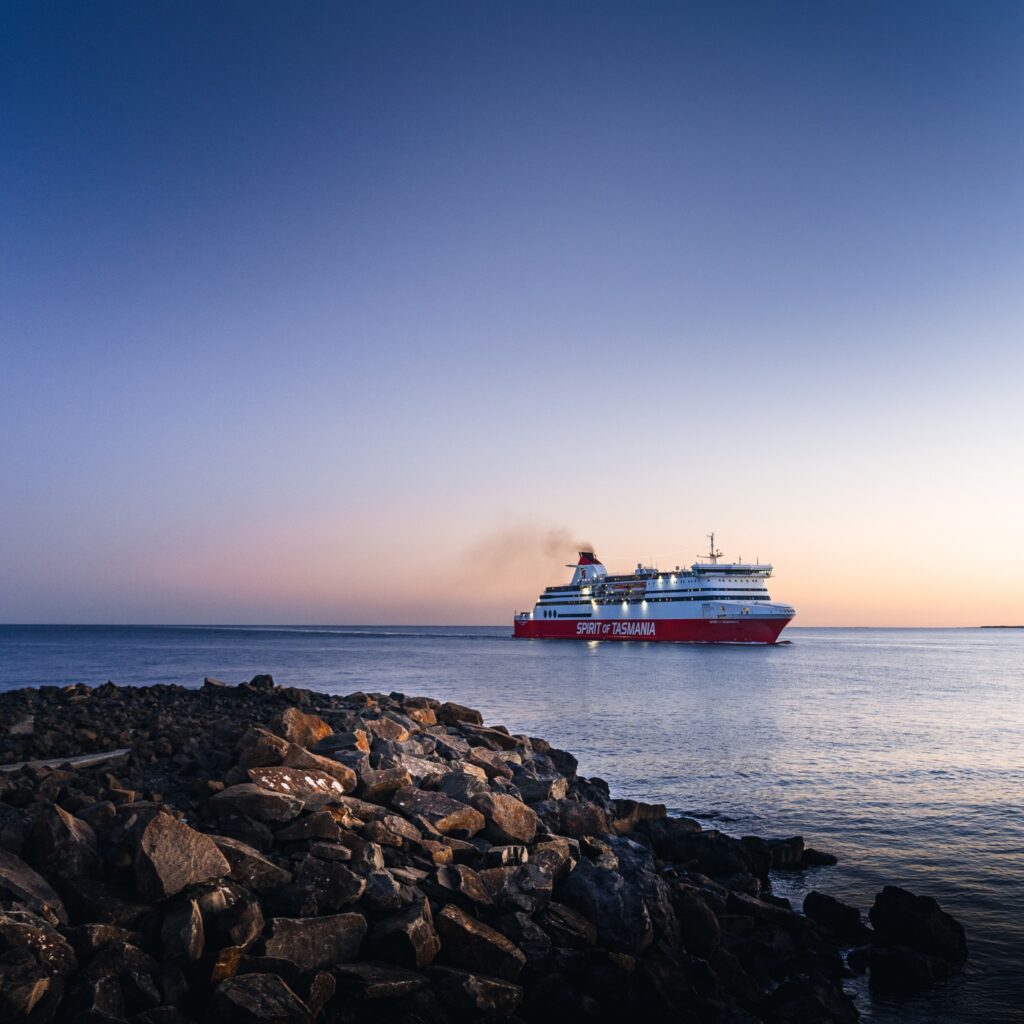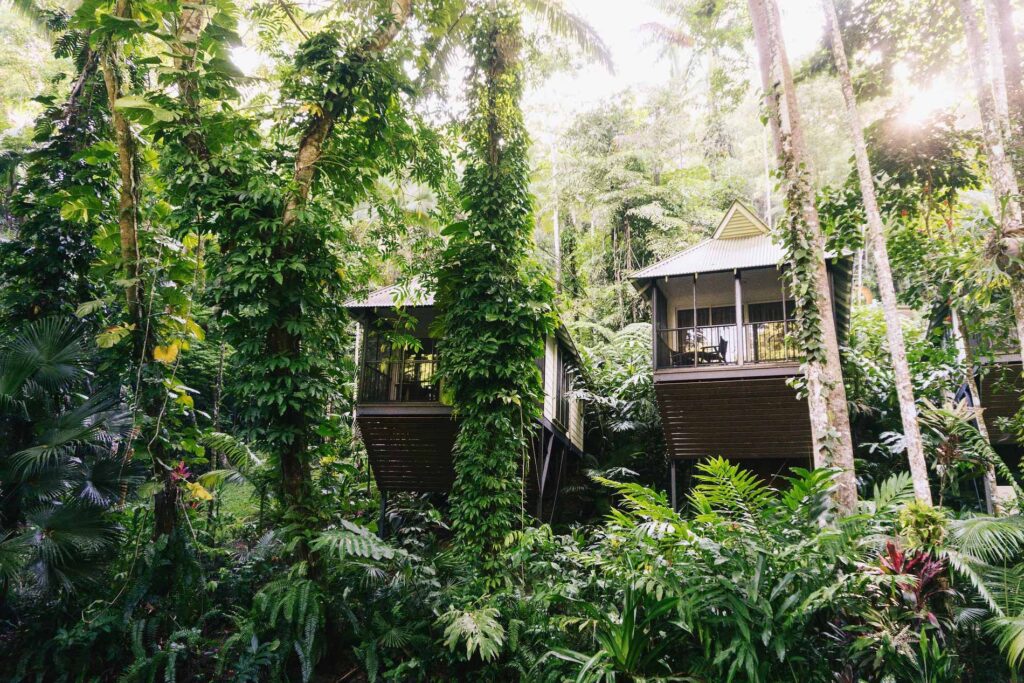Australia is a wildly, wonderfully vast country.
The kind of place where a ‘quick drive’ can take an entire day and where each region feels like a different country. One coastline can feel like another planet compared to the next. And while that’s part of the magic, it also means travelling here takes a bit of planning.
This guide is here to help. Where to go, how to get there, and how to make sure your next adventure gives back as much as it takes.

Fly smarter: Fewer stops means lower emissions
Long-haul flights are often unavoidable when heading to Australia. Opt for a direct flight if possible; it’s the take-offs and landings that rack up the most emissions. One flight, one landing, less impact.
Once you arrive, domestic flights might seem like the fastest way to get around, but there are greener (and often more scenic) alternatives…

2. Take the Scenic Route: Trains and Buses
Once you get here.
Train Travel
Now, Australia’s long-distance trains may not be high-speed, but they do make for an unforgettable experience. Skip the stress of airport security and jump on a train. The Sydney to Melbourne XPT takes a little longer (but does it really when you factor in those airport wait times?), but lets you take in the scenery.
If you’re heading west, The Ghan and The Indian Pacific are epic journeys with the most spectacular landscapes. Gourmet meals, cosy cabins, and wide windows make it feel more like a moving boutique hotel than a train trip.
If your train arrives in Melbourne too early for check-in, stow your bags at luggage storage at Southern Cross Station and explore the city hands-free.
Bus Travel
Australia’s famous Greyhound buses have evolved beyond backpacker basics. Their hop-on, hop-off passes are perfect for flexible travel all along the east coast, and you’ll find upgraded coaches with USB ports, decent legroom, and air con that actually works.
If you want a bit more comfort, premium services like Firefly Express and V/Line offer upgraded coach experiences.
3. Set Sail to Tasmania
Sure, you could fly. But why would you when you sail across the Bass Strait and let the journey be part of the adventure. The Spirit of Tasmania ferry offers an overnight crossing from Melbourne to Devonport, with private cabins and lounges for a comy crossing.
Recently, the ferry operator joined the Green Marine program. Which means committing to lower emissions and better environmental practices. Plus, taking the ferry means you can bring your car – perfect for your island road trip. Wake up in Devonport, well-rested and ready to explore.

5. Rent an EV for the Road Trip of a Lifetime
When it comes to rentals, EV’s are offered by most of the major car rentals companies, like Hertz and evee.
Gone are the days if range anxiety. Apps like PlugShare, which show real-time charger availability, user reviews, and even the best coffee stops nearby. More good news: plenty of hotels, wineries, and eco-lodges now have on-site charging, so you can plug in overnight while indulging in a long lunch or settling in for a slow morning. Road trips, but smarter.
5. Sleep Green: From Glamping to Carbon-Neutral Hotels
Not all eco-stays mean composting toilets and cold showers. In Australia, sustainable accommodation ranges from off-grid luxury lodges to dreamy glamping spots that swap four walls for canvas and uninterrupted nature views.

Glamping in the Wild
If pitching a tent isn’t your thing but you still want to wake up to birdsong and fresh air, glamping is your answer. Australia does it well—think solar-powered bubble tents in the Blue Mountains, treehouse retreats in the Daintree Rainforest, and beachfront eco-pods where the only alarm clock is the sound of waves. It’s nature, but with plush bedding and an actual bathroom.
Luxury Eco-Lodges & Sustainable Hotels
For those who prefer sustainability with a side of indulgence, Daintree Ecolodge offers rainforest cabins where you can sip your morning coffee surrounded by 180-million-year-old trees. Over in the Blue Mountains, Emirates One&Only Wolgan Valley is a conservation-focused retreat where ‘remote’ doesn’t mean ‘roughing it’. Think private plunge pools, locally sourced gourmet dining, and a zero-carbon footprint.
Prefer a city stay? Look for hotels with Booking.com’s Travel Sustainable badge, which highlights accommodations committed to reducing their impact without sacrificing comfort
6. Choose Eco-Certified Tour Operators
Seeing Australia’s landscapes up close is incredible—but not all tours are created equal. Eco-certified tour operators ensure you can explore the Great Barrier Reef, hike the ancient cliffs of Kakadu, or kayak through Noosa’s everglades without damaging the very places you came to see. Look for tours that don’t just minimise harm, but they actively contribute to conservation efforts, funding reef restoration, wildlife protection, and Indigenous-led tourism experiences that connect you with Country in a meaningful way.
7. Stay Somewhere That Gives Back
Hotels have come a long way from ‘hang up your towels to save the planet’ signs. Now, truly sustainable stays actively regenerate the environment.
Take Eco Beach Resort in Broome, where solar panels power the resort, rainwater is harvested for everyday use, and a strict ‘leave no trace’ policy keeps the pristine coastline exactly that. Or Silky Oaks Lodge in the Daintree Rainforest, where you can sip cocktails on a treetop deck knowing the entire retreat runs on renewable energy and sources all its food locally.


